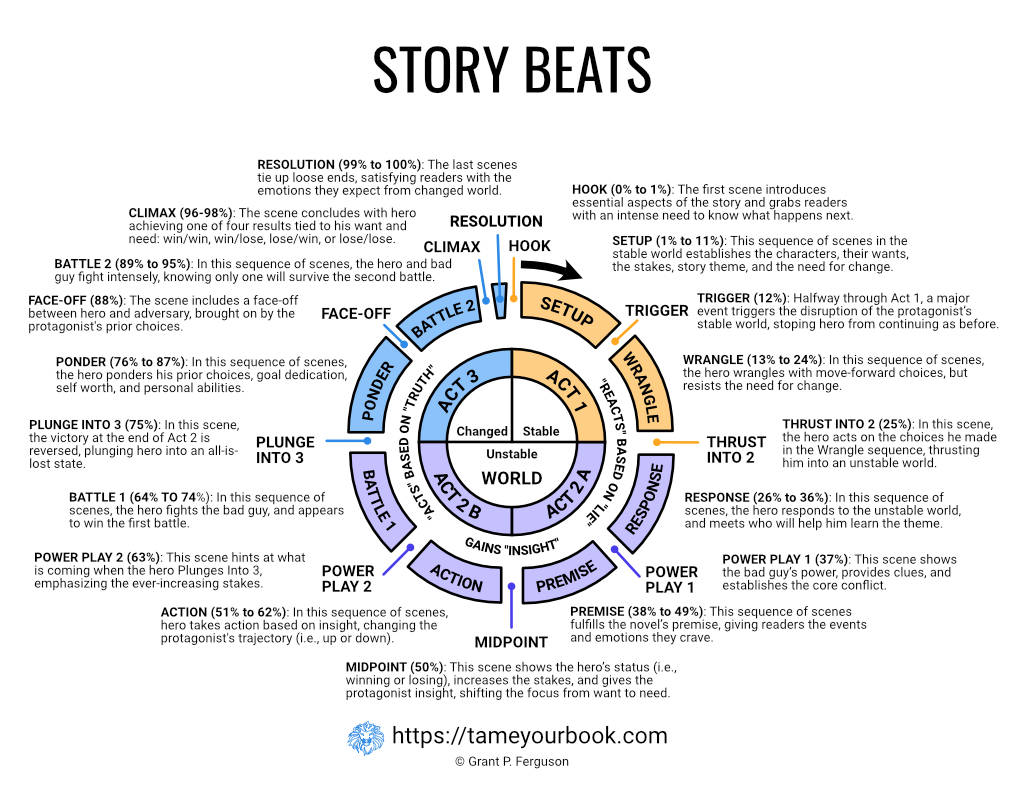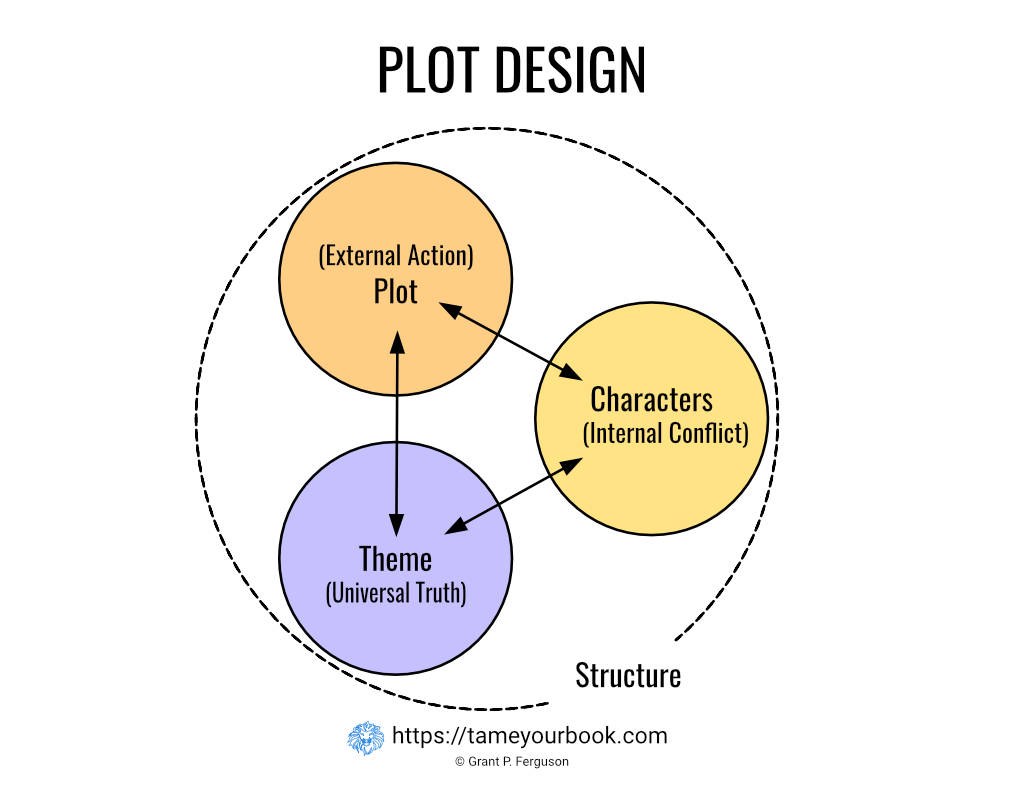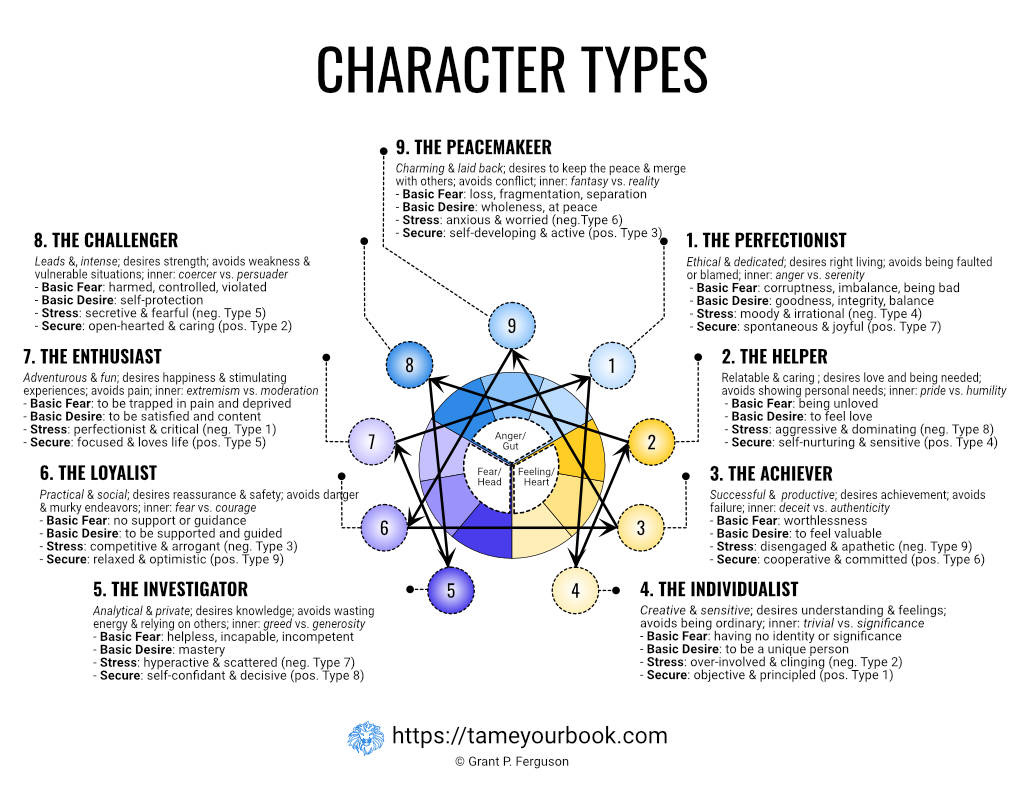In this multi-post series, you’ll discover techniques and technology, such as thread of events, to help you self-edit. Part 3 offers questions to uncover plot problems and opportunities.
Plot (Part 3): Thread of Events
A novel’s main plot is a thread of events that form the narrative of what occurs with the story.
- Characters are the who
- Plot is the what
- Theme is the why
- Structure is the how
Audience Expectations Connected by Thread of Events
Readers expect stories to unfold based on their pre-established expectations gained over a lifetime of reading books and watching films. The plot follows a logical series of events sequenced within the Global Story Beats.
Please keep in mind the Story Beats represent general patterns, and authors are free to vary the locations and percentages. As principles, these beats are useful for interpreting and writing stories, but not as rules.

Link Plot, Character, and Theme
Given the mixture of plot, characters, and theme ordered by structure, the Scrivener app allows you to zoom from details to big-picture and back while answering essential questions.
Plot edits:

- Do events take place early that create tension, causing readers to engage as concerns increase for the lead’s well-being?
- Do the events create a story problem that captures readers’ attention?
- Does something dramatic happen to the lead character within the novel’s first page or two?
- Do the emotion-laced events in the early scenes encourage readers to bond with the lead character, experiencing her emotions?
- Are the stakes becoming clear to both the lead character and readers?
- Do the lead’s efforts focus on solving one escalating problem she can’t avoid and balance the mixture of narrative and action?
- Does the lead’s pursuit of a difficult goal create conflicts and tension?
Character edits:

- Is it clear who is the main character?
- Will readers relate to this character despite her flaws?
- Is the lead pursuing a difficult goal, one that if achieved, will solve the story’s central problem?
- Is it clear who (or what) opposes the lead’s efforts to resolve the story problem, and what will happen if unsuccessful?
Free Character Template
Theme edits:

- What does the lead character need to hear, but she ignores trusted friend or mentor?
- Do the challenges and conflicts of pursuing lead’s goal convey the theme meaning and emotions?
- Do the lead’s choices represent one or more dilemmas, ever increasing the story’s tension?
- Does the lead’s inner issue hinder solving the story problem?
- Does the lead resist the need to change, but as the story progresses, finally sees things differently?
- Will readers learn something from the lead’s struggle that helps them to deal with real-life issues?
- At the end of the story, does the success or failure of solving the story problem highlight how the lead has changed?
Structure Edits:
- Does the lead’s backstory trickle out over multiple pages instead of an information-dump?
- Do the scenes show what the lead character needs to know about self?
- Do the scenes allow the characters to show rather than tell the story?
- Do the stakes show the lead faces risks that could negatively influence her physical, professional, and psychological well-being?
Related Posts
- The Trellis Method: How Busy Writers Can Use Story Structure and Write a Book Readers Will Love
- How to Use Global Story Beats with Scrivener
- Exploring How to Structure a Book
- If I Was Creating a Story Arc Today
- A Story Beats HOOK Example
- Story Beats: Discover an Easy Way to Write Your Novel’s Essential Scenes
- Story Structure: Exploring the Lester Dent Story Formula
- Story Structure: Erle Stanley Gardner’s Fiction Factory
Resources
Leave a Reply
How do you weave together the thread of events for your novel?

